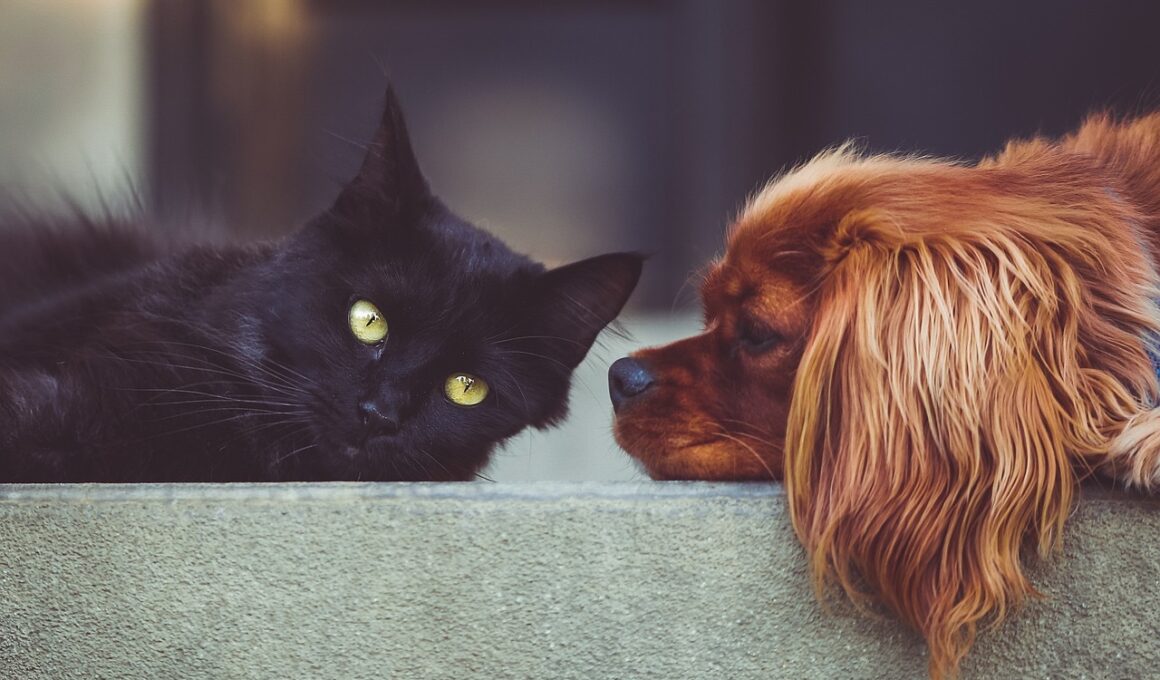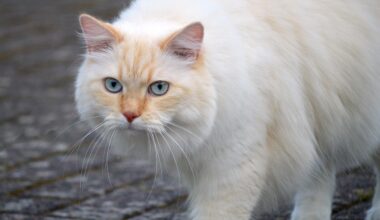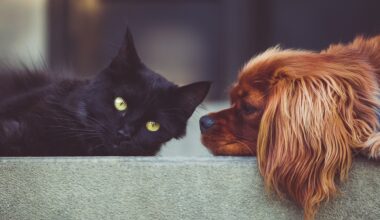Post-Processing Techniques for Blending
When photographing cats alongside other pets, post-processing is crucial for creating a seamless integration of the images. Begin by selecting a photo editing software that fits your needs, such as Adobe Lightroom or Photoshop. Start with adjusting the exposure and cropping your images to focus on the subjects. Utilize layers to adjust backgrounds and subjects separately, allowing for greater control. Also, employ masks to blend edges softly between images of different pets. Adjust the color grading to ensure that the colors of the cats and other pets are harmonious. This will enhance the visual appeal and realism of the photograph. Pay close attention to shadows and highlights, as these can vary widely between pets. Use tools like the brush tool to refine the effect and to ensure that every element looks coherent. Experimenting with blending modes can provide unexpected but visually pleasing results. For consistency, use similar presets across your images to maintain a unified style, which will elevate your overall portfolio. Finally, export your images in high resolutions to ensure that they look stunning across all platforms. Post-processing can elevate your photography significantly.
Lighting plays a vital role in how well you can blend images of cats with other pets. Ideally, shoot your images in natural light, as it often yields the most flattering results. If shooting indoors, set up near windows to take advantage of soft, diffused light. Avoid harsh shadows that can detract from your images. When adapting images taken in differing lighting conditions, consider using light gradient tools in your editing software. Adjust the brightness and contrast separately for each subject to maintain their unique qualities. Use the color balance option to ensure all pets appear natural and vibrant. It’s crucial that cats don’t appear overly edited; maintain some authenticity in their features. If one pet is from a brighter image, while the other is darker, you might have to adjust the overall exposure or apply a vignette to unify them. To further enhance the sense of bonding between pets, consider adding playful backgrounds. Whether using flowers or toys, ensure they complement the animals without distracting. With careful attention to lighting and balance, you can achieve seamless integration.
Creating a Unique Color Palette
Another essential aspect of blending cats and other pets is the creation of a consistent color palette. Pick a set of colors that will evoke a particular mood for your image. For example, playing with earthy tones can create a cozy atmosphere that feels inviting. Alternatively, you can opt for bright, lively colors to convey energy and youthfulness. Use a color wheel to select complementary colors that can enhance the features of all pets involved. This not only makes your images visually appealing but also ties them together artistically. When editing, use the hue and saturation settings to adjust colors so they resonate with your chosen palette. Don’t forget to keep an eye on skin and fur tones; blending should not result in unnatural appearances. Additionally, consider using filters that could elevate your mood palette cohesively. Consider creating a palette template for future photo shoots to ensure you can recreate this effect easily. Experiment to find what resonates best with your style while remaining mindful of the subjects. Establishing a unique palette can truly elevate your photographs to new heights.
Enhancing texture is another method for improving the blend between cats and other pets in post-processing. Textures can truly bring your images to life, adding depth and character. Start by identifying areas within your image that can benefit from increased clarity. Use sharpening tools carefully; over-sharpening can result in an unnatural look that detracts from your photo. A good tip is to increase texture only on the subject’s fur, where it makes the most impact. For backgrounds, consider applying a gentle blur to ensure that the foreground remains the focal point. Utilizing focus stacking techniques, where multiple images at varying focal points are merged, can also enhance texture. By focusing on different pets and their features, you can create a unique shot that captures the essence of each animal. Additionally, explore using background patterns to create engaging imagery without overshadowing subjects. This enriches the narrative while keeping it crisp and clean. Remember, texture helps convey emotion in an image, drawing viewers in while demonstrating your passion for your subjects.
Utilizing Negative Space
In post-processing, the concept of negative space can effectively enhance images of cats with other pets. Negative space refers to the empty areas around your subject, which can be strategically used to create balance in your photos. By allowing negative space, you give your subjects room to breathe, establishing a certain visual harmony among various pets. When preparing your images, consider where you can crop to maximize this effect. This could mean focusing on a cat lounging among other animals, using the background to tell a story. Highlighting this negative space not only focuses the viewer’s attention but also adds artistic value. Consider making adjustments during editing to emphasize their surroundings, allowing for clarity without clutter. For images with more dynamic shots, using negative space can offer a canvas for movement, enhancing the overall flow. This approach invites viewers to engage more deeply with your images. To achieve this, develop an eye for what can be left out, focusing on your subjects while keeping the images clean and open. Experimenting will yield stunning results.
Color grading is another powerful tool that can help bridge the gap between images of different pets. By applying similar grading across the photoshoot, you unify each pet’s unique features for a cohesive look. Start with adjusting the mid-tones, which significantly influences the overall appeal of your images. Emphasize hues that naturally appear in both cats and other pets, enhancing their commonalities. Ensuring that textures like fur and coat patterns appear consistent among your subjects will enrich the visual storytelling. The use of LUTs (Look-Up Tables) can assist with bulk grading, allowing for uniformity across your photographs. However, tailor final adjustments individually to ensure each pet maintains its character. Blending various colors can bring warmth or coolness to the images, making it essential to test different schemes. The key is aiming for balance so that no particular pet overshadows the others. Work meticulously through each image, maintaining a close eye on color variance. When done right, color grading creates not only stunning imagery but also a narrative that resonates across all subjects.
Final Touches for Seamless Blending
As you finalize your post-processing projects featuring cats and other pets, don’t overlook the small yet impactful touches that bring everything together. Details like adding soft vignettes can subtly draw the eye towards the subjects and away from distractions. In the editing software, utilize noise reduction tools, which help smooth out any unwanted graininess in photos. Pay attention to edge smoothing; having feathery edges can blend pets more naturally. Look into additional elements like fur brushes in Photoshop that can help you seamlessly stitch together parts of images, especially in composite scenes. Paying attention to the contours of each pet’s body will guide you in making everything appear as one unified composition. Adding small, gentle highlights can create a sense of dimensionality that pulls the scene together. Always reflect on your images after editing; sometimes, stepping back can help you see what final polishing is still required. When these final touches are complete, you can then proudly present your beautifully blended photographs of cats with their companions in harmony.
With these post-processing tips in your arsenal, blending cats with other pets can become an enjoyable and fulfilling endeavor. Preparing your images during the shoot by considering backgrounds, lighting, and subjects goes a long way in creating a harmonious final composition. Each technique discussed not only enhances the individual images, but they also contribute to telling a story that reflects the relationship between your pets. The key lies in the artistry of post-processing, where creativity meets technique. Emphasizing teamwork among different pets can provide a captivating narrative for your audience, fostering engagement. Always aim for a balance between the artistic goals and the authenticity of each furry friend. This will resonate well with pet lovers who appreciate well-blended scenes showcasing personality and emotional depth. Never hesitate to showcase your unique style while remaining consistent with your chosen themes and elements. Continuous practice in post-processing will elevate your craft and inspire confidence in your photography. Continue experimenting and don’t be afraid to create vivid imagery that celebrates the bond between pets. In the end, happy shooting and editing can ultimately lead to awe-inspiring results that you can take pride in sharing!


